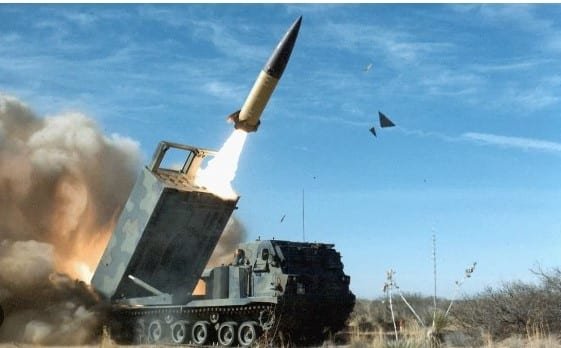For the first time According to three U.S. officials, Ukraine’s military has already used the potent long-range ballistic missiles that the United States initially gave it earlier this month twice against Russian soldiers.
According to the officials, the first hit occurred on April 17 in the morning and was directed towards a Russian military airfield around 100 kilometers inside Crimea’s border. Tuesday night, the Ukrainian military launched its second use of the Army Tactical Missile System (ATACMS), supplied by the United States, on Russian soldiers east of the town of Berdyansk in Zaporizhzhia Oblast in southeast Ukraine, according to officials.
A representative for the National Security Council verified that the United States has sent ATACMS to Ukraine, even though the Biden administration has not previously acknowledged doing so. They were included in the
Recent revelations regarding Ukraine’s use of U.S.-supplied ballistic missiles against Russian soldiers have intensified geopolitical tensions in Eastern Europe. With two reported incidents in April, involving strikes near Crimea’s border and east of Berdyansk, the conflict between Ukraine and Russia has entered a new phase of military escalation. This comprehensive analysis examines the background of the conflict, the significance of Ukraine’s utilization of advanced weaponry, and the broader implications for regional stability and international relations.
Background of the Conflict:
- Historical Context:
- The conflict between Ukraine and Russia dates back to Russia’s annexation of Crimea in 2014 and subsequent military intervention in eastern Ukraine.
- Despite international condemnation and diplomatic efforts to resolve the crisis, hostilities persist, fueled by territorial disputes and geopolitical rivalries.
- U.S. Support for Ukraine:
- The United States has been a staunch supporter of Ukraine’s sovereignty and territorial integrity, providing military aid, economic assistance, and diplomatic backing.
- While previous administrations have offered varying levels of support, the Biden administration has affirmed its commitment to Ukraine’s security and defense against Russian aggression.
Ukraine’s Use of Ballistic Missiles:
- Deployment of ATACMS:
- According to multiple U.S. officials, Ukraine’s military has deployed the Army Tactical Missile System (ATACMS), a powerful long-range ballistic missile system provided by the United States.
- The first reported use occurred on April 17, targeting a Russian military airfield near Crimea’s border, followed by a second strike east of Berdyansk on Tuesday night.
- Military Significance:
- The deployment of ATACMS represents a significant enhancement of Ukraine’s military capabilities, enabling precision strikes against Russian targets at considerable distances.
- By leveraging advanced weaponry supplied by the United States, Ukraine seeks to deter further Russian aggression and defend its territorial sovereignty.
Implications and Reactions:
- Escalating Tensions:
- Ukraine’s use of U.S.-supplied ballistic missiles against Russian forces signals a dangerous escalation in the conflict, raising the risk of a broader regional conflagration.
- The targeted strikes near Crimea and Berdyansk have heightened tensions and prompted concerns of retaliatory actions from Russia, further destabilizing the region.
- Geopolitical Ramifications:
- The escalation in Eastern Europe has reverberated across the international community, eliciting responses from key stakeholders and allies of both Ukraine and Russia.
- The United States’ provision of advanced weaponry to Ukraine underscores its commitment to countering Russian aggression and defending democratic principles in the region.
- Diplomatic Dynamics:
- The Biden administration’s decision to supply ATACMS to Ukraine, while not publicly acknowledged until now, reflects a strategic calculus aimed at bolstering Ukraine’s defense capabilities.
- However, the move risks exacerbating tensions with Russia and complicating diplomatic efforts to find a peaceful resolution to the conflict.
The reported use of U.S.-supplied ballistic missiles by Ukraine against Russian forces represents a pivotal development in the ongoing conflict in Eastern Europe. As tensions escalate and military actions intensify, the risk of further violence and destabilization looms large. It is imperative for all parties involved to exercise restraint, prioritize diplomatic solutions, and uphold international norms and obligations. Failure to de-escalate the situation could have dire consequences for regional stability and global security, underscoring the urgency of diplomatic engagement and conflict resolution efforts.
